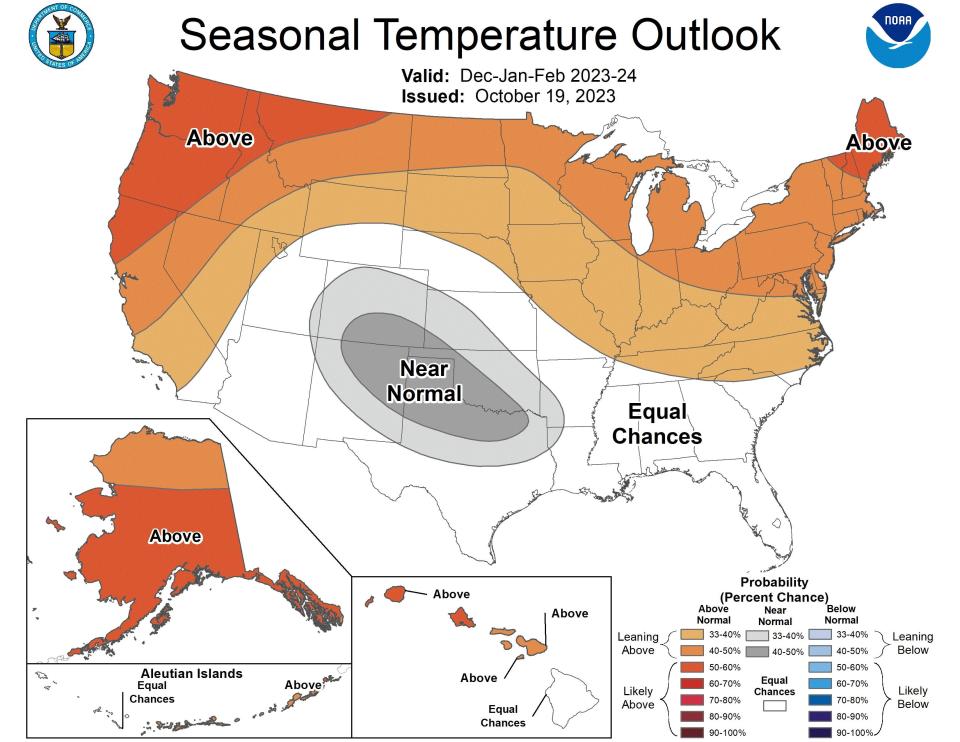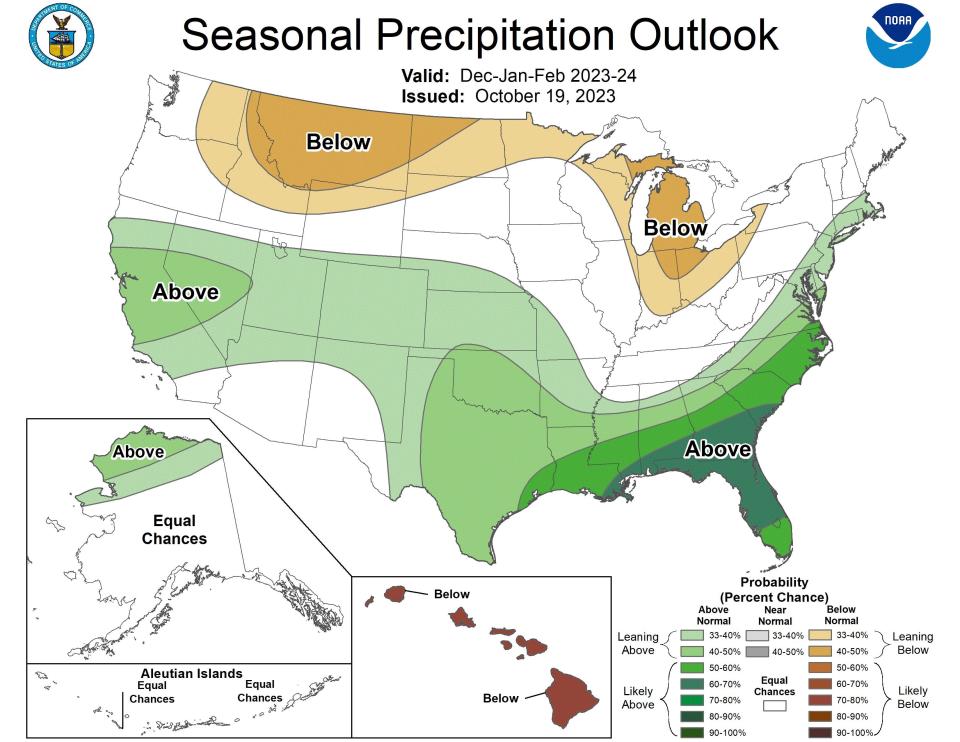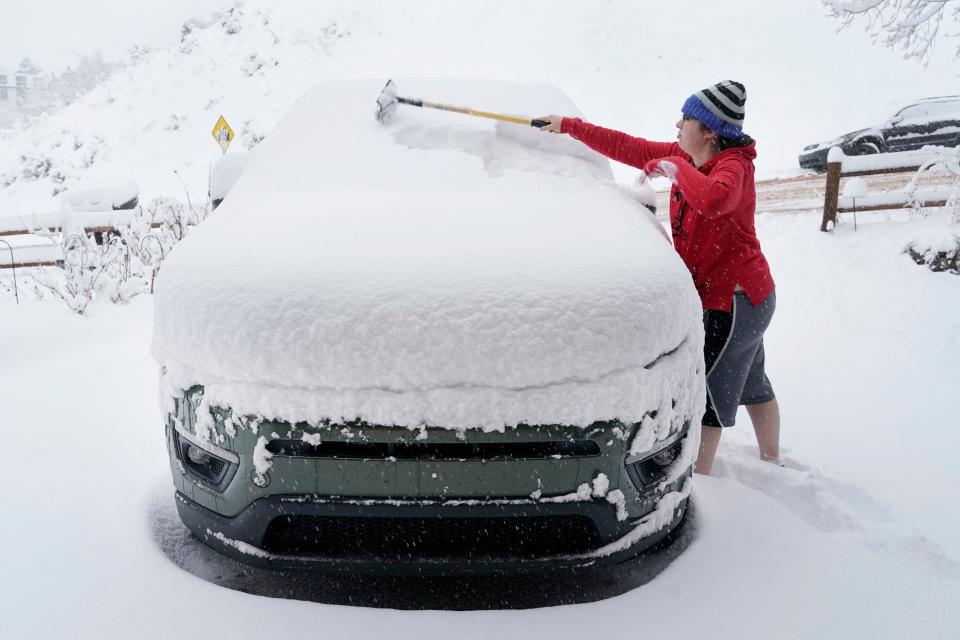NOAA winter 2023-2024 forecast: Here's where it's expected to be unusually warm this year
Ready or not, winter is coming − but how bad is it going to be? Federal forecasters from NOAA's Climate Prediction Center gave us their answer Thursday in an annual winter outlook.
NOAA said the U.S. winter of 2023-24 will probably be dominated by the effects of what could be a powerful El Niño. That means a mild, dry winter is likely on tap for much of the northern tier of the U.S., while the southeastern U.S. should see a wetter-than-average winter.
The center's forecast covers December, January and February, which is known as meteorological winter.
What's the forecast for winter?
Warmer-than-average temperatures are favored across the northern tier of the U.S. and much of the far West, NOAA said. The greatest odds for warmer-than-average conditions are in Alaska, the Pacific Northwest and northern New England. No parts of the nation are forecast to to be colder than average, according to the forecast.

As for precipitation, wetter-than-average conditions are most likely in northern Alaska, portions of the West from California to the south-central Rockies, the southern Plains, the Gulf Coast, the Southeast and the lower mid-Atlantic, NOAA predicts.
“An enhanced southern jet stream and associated moisture often present during strong El Niño events supports high odds for above-average precipitation for the Gulf Coast, lower Mississippi Valley and Southeast states this winter,” said Jon Gottschalck, of the Climate Prediction Center.

The wet conditions across the South should help ease the drought in the region: "El Niño, with its enhanced precipitation, is expected to provide drought relief to the southern U.S. during the next few months,” the Climate Prediction Center's Brad Pugh said.
As for where a dry winter is likely, the greatest odds for drier-than-average conditions are forecast in portions of the northern Rockies and central Great Lakes region, especially for Michigan and northern Ohio and Indiana.
What role does El Niño play in our winter?
The main factor federal climate scientists use to forecast winter weather is the strength of El Niño or La Niña, climate patterns that affect weather in the U.S. and around the world. The entire natural climate cycle is officially known as the El Niño-Southern Oscillation (ENSO), which swings between warmer and cooler seawater in the tropical Pacific Ocean.
(El Niño is unusually warm water in the tropical Pacific Ocean; La Niña means cooler-than-average water in the Pacific.)
This El Niño, which began in June, is predicted to last through the winter. It could be a "historically strong" one, the Climate Prediction Center said, potentially rivaling those in 2015-16 and 1997-98.
Let it snow?: Winter predictions start as El Niño strengthens. Here's what forecasters say.
What about snowstorms and blizzards?
The forecast released Thursday predicts only where above- or below-normal temperatures – and above- or below-normal precipitation – are most likely.
This winter forecast does not specify how much precipitation will fall as rain, snow or ice, only that more or less is likely overall. Snow forecasts depend upon the strength and track of winter storms, which generally cannot be predicted more than a week in advance, the center has said in the past.
As for the 50 million Americans who live in the Northeast and mid-Atlantic, where big snowstorms typically bring the most angst, the climate center does not give a specific forecast for how much snow will fall.
How cold and snowy will US winter be?: Why October snow in Siberia could hold the answer.

Other patterns aren't figured in
Climate patterns such as the Arctic Oscillation – which can unleash intensely cold temperatures across the central and eastern U.S. – aren't included in this official forecast at this time because they can't be predicted more than one or two weeks in advance.
Other large-scale climate patterns in the atmosphere that can influence winter weather include the Madden-Julian Oscillation, which can affect the number of heavy-rain events along the West Coast. It also can contribute to other extreme events in the U.S., including Arctic air outbreaks during the winter months across the central and eastern portions of the nation, the Climate Prediction Center says.
The forecast does also not factor in Siberian snow cover, which other forecasters use as the basis for their winter weather forecasts.
This article originally appeared on USA TODAY: NOAA winter 2023-24 forecast: How cold will it be? What about El Niño?

